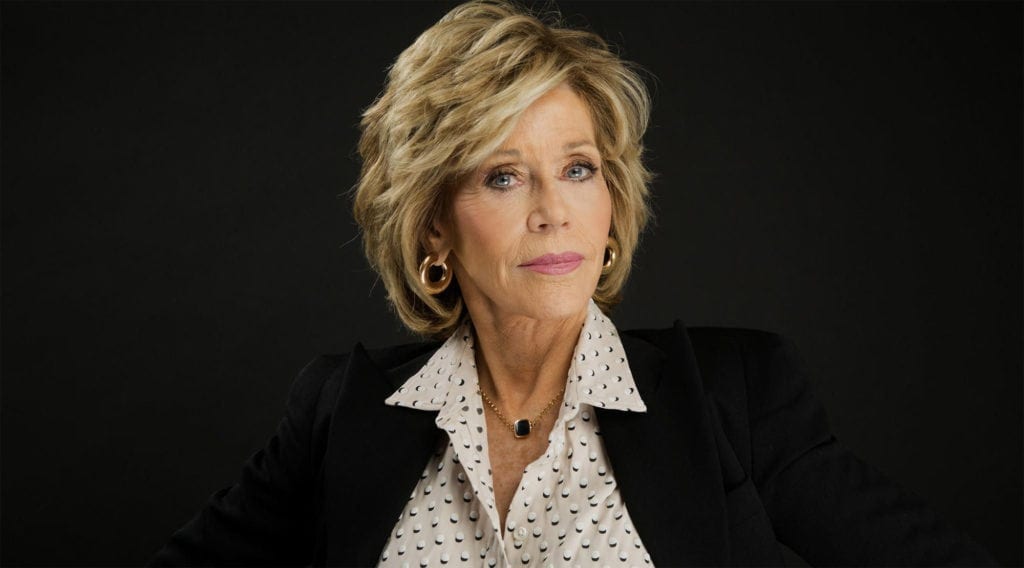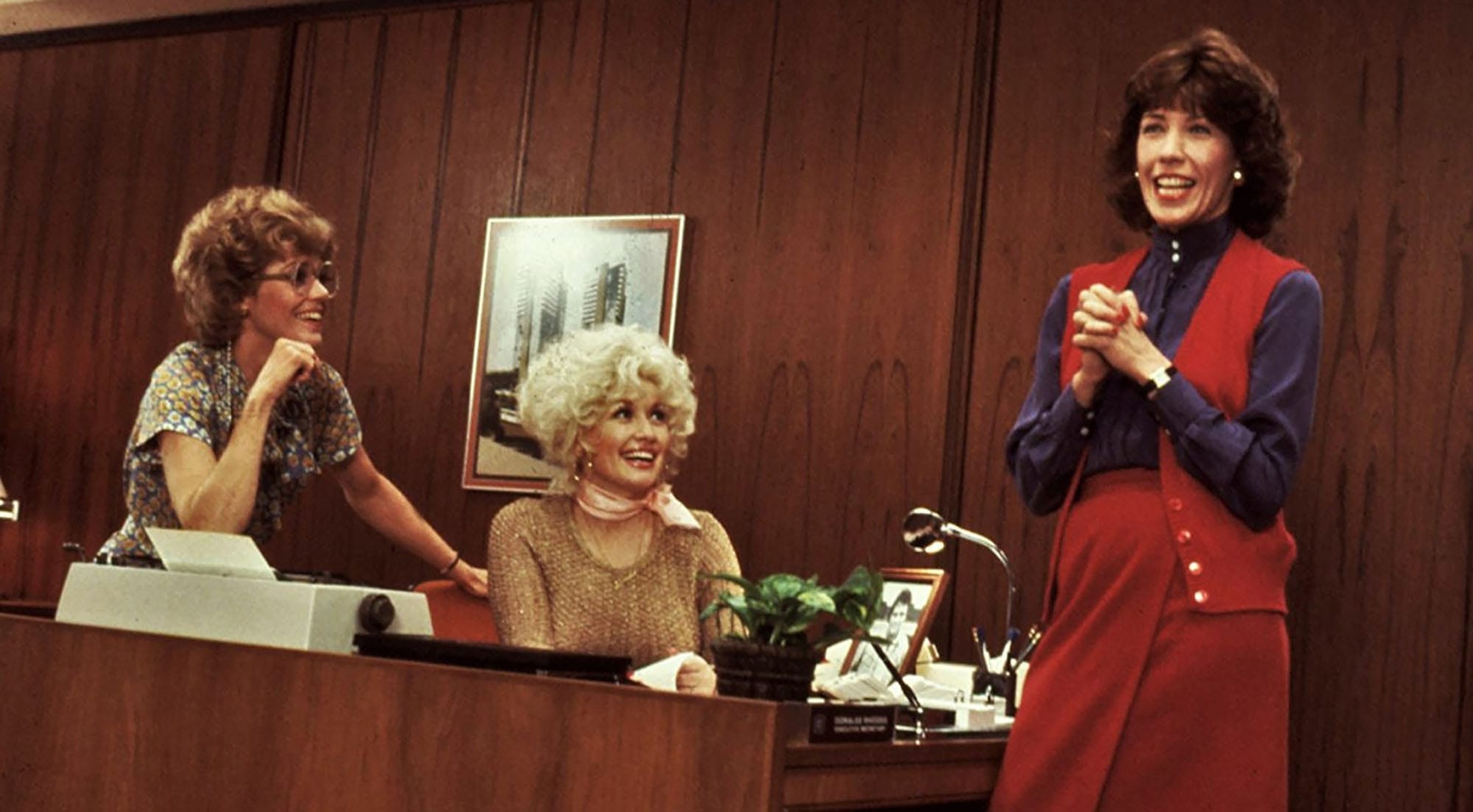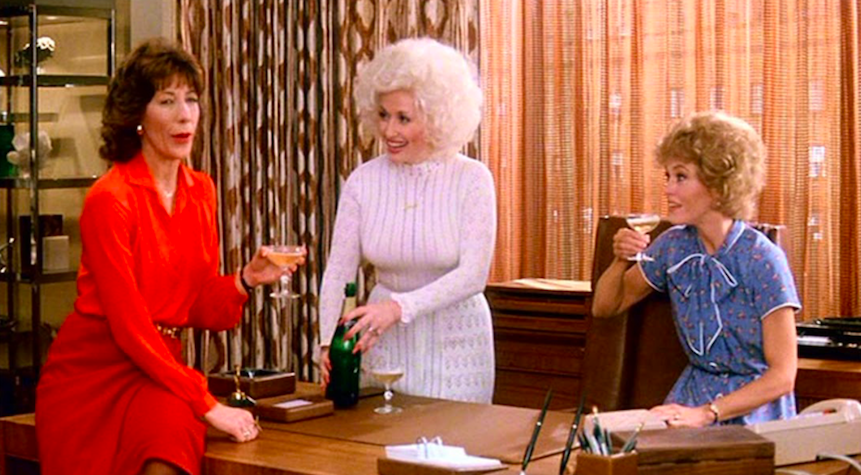
Dreams he’ll never take away: The shaky feminism of ‘9 to 5’
In a talk at the Television Critics Association Panel, Jane Fonda opened up about her documentary Jane Fonda in Five Acts, the radical feminism of 9 to 5, and the reboot movie written by Rashida Jones.
Explaining she thought women in the workplace have it even tougher today than they did in 1980 when the groundbreaking feminist movie was released, Fonda declared: “You worked for the company – you were hired by the company; if you had problems you went to the company. But today a lot of the workforce is hired by an outside company. Who do you talk to if you have a problem?”
In the wake of the #MeToo and Time’s Up movements, the powerful thematics of the movie (in which three women take revenge against their “sexist, egotistical, lying, hypocritical, bigot” of a boss) have also never felt so seminal. Fonda remains optimistic that the landscape which nurtures such behaviour is changing. “I do think sexual harassment will tend to drop,” adding with a smile, “Guys are scared.”

Fonda confirmed that herself, Dolly Parton, and Lily Tomlin are “all intending to be in” the upcoming reboot of the movie, but only if it follows the power of the original, diving into workplace issues by focusing on a dynamic group of strong female characters.
In the almost 40 years since the movie was released, much has changed for women in the workplace – but (as Fonda suggested), a lot hasn’t changed either. And though the movie is rightfully celebrated for being a revolutionary one that stirred shit up upon release, there are some elements of it that haven’t aged too well.
What 9 to 5 does exceptionally well is laying out some of the most restrictive systemic power structures of society within the microcosm of an office. Sure, the film is farcical and absurd at times, but it never allows you to look away from the lived-in realities of women and people of color. However, it doesn’t always perfectly include their voices in the conversation either.

Within the first few minutes of the film, a young black man stuck in the postal room sneers with frustration at outside new-hire Judy (Fonda) being given a job ahead of him despite his internal experience.
A little later, working widow Violet (Lily Tomlin) isn’t just cast aside for a promotion job (despite having five years more experience than the man hired) – she also has to face the frustration of her boss taking credit for her work. And it’s further revealed that Doralee (Parton) has been repeatedly sexually harassed by head honcho Franklin Hart Jr., including suffering (the now all too familiar) rouse of a fake business event hotel stay in an attempt to get her into bed.
The three women finally take charge of the office after kidnapping Hart and forcing him to (literally) wear the bondage of domesticity formerly forced upon pre-workforce women. Surveying the place with a keen eye, senior supervisor Violet declares they’ll “make some changes that really count” while they have the boss tied up – and they do.

The office is a bright, colorful, and relaxed cornucopia of diversity where nobody has seemingly been excluded from opportunity and where a work-life balance has been actively instated.
Revolutionary programs like flexible hours, job sharing, a daycare center, and even a company rehabilitation program have been put into place, with a final request of better pay left sadly unfulfilled by the movie’s end. But it’s a start. The company CEO (a Colonel Sanders-looking motherfucker) is enthusiastic about the changes and how they’ve increased productivity, offering a reluctant Hart the chance to come work in Brazil with him.
As the women laugh at his misfortune, Colonel Sanders tells Hart, “I ain’t the kind of boy who takes no for an answer,” throwing a witty role reversal onto a horrifying sentiment many women have received from men in positions of great power.

As an extended metaphor for the power structures of society and a reflection of workplace concerns, 9 to 5 is a phenomenal film that remains painfully relatable today. But it also oversimplifies some greater issues and leans into some irksome white feminism tropes, where a problem solved for some is seen as a problem solved for all.
9 to 5’s also a film in which these three white women are uneasily beholden as saviors. They’ve changed the structures of their own office, but the problems they were fighting within their own working orbit still exist for others outside of it.
As we learned during the avalanche of sexual harassment revelations during the cavalcade of #MeToo this past year, you can take down one Harvey Weinstein, but there are still going to be hundreds (if not thousands) of powerful men who need taking down for similar behavior too.

There’s a bigger opportunity for egalitarianism to be found within 9 to 5 that isn’t expressed within the film. It’s fine to ship Hart off to another country, but imagine how incredible and potentially wide-reaching their influence could have been if they’d dared to unite their powers in reporting him to authorities.
It’s worth noting that the politics of the film are in part based on the experiences of members of the 9to5 National Association of Working Women, a union group formed in 1973 to improve working conditions and ensure the rights of women and families are protected in the United States.
However, there’s only one single reference to unionization made in the movie and it’s when Roz (the “company spy”) announces that the company needs to “clamp down” on it. The efforts of the three women to change the workforce clearly fall into the sort of activity unions push for, but without any of the collective discussion that union decision-making requires.

Instead, Judy, Violet, and Doralee plough ahead with their ideas and seemingly instigate them with little or no conferring about their needs. Though people of color have speaking roles in the movie and one has his concerns vocally made clear, there was an opportunity for such voices and concerns to be given a larger platform. On a smaller level of concern, they don’t even share their victory bottle of champagne with the rest of the workforce at the end of the movie! (We’re only half joking.)
But there’s also a suggestion of awareness about some of the issues the film (and the three women) may have failed to address or to tackle.
Just before the screen fades to black and the credits roll, the three women toast their achievements and their continued hopes for better, stating: “This is just the beginning.” In 1980, it was a statement of optimism.

Sadly we still face the same battles across a number of industries, giving the statement a retrospective echo of ominous irony. What has become all too clear within the past twelve months and the emergence of the #MeToo and Time’s Up movements is that collective action gleans bigger results and making noise as a unit is far greater than making noise alone.
With the upcoming reboot of 9 to 5, we can only hope the film maintains the timely politics, strong female characters, and striking absurdity of the original. But we also hope it shows a marked evolution from the 80s exploration of the same topics, one where white women don’t speak for a diverse workforce and where the needs of the many are delivered upon within the collective infrastructures of intersectional feminism.
Maybe they can even share that champagne around the office at the end of it all.



